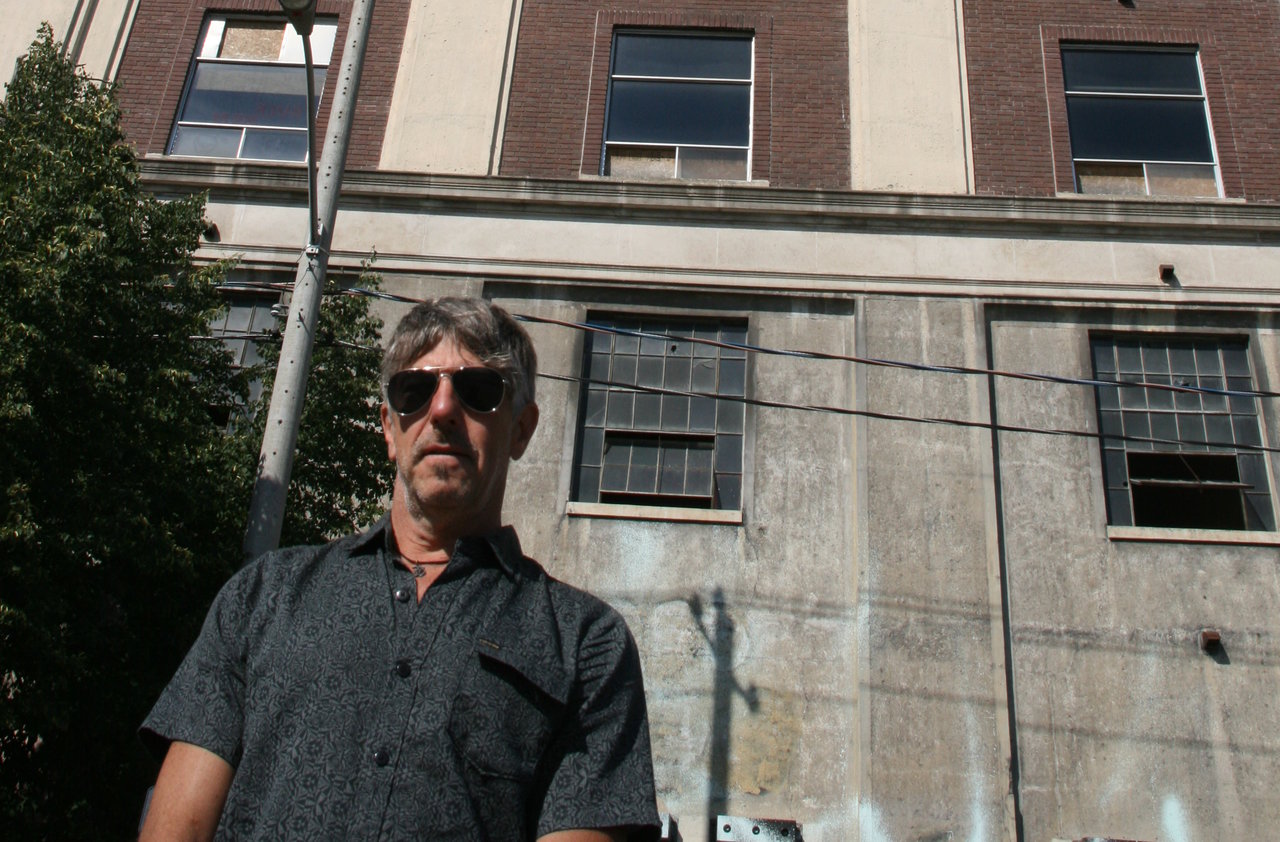 David Liss, Artistic Director and Curator, MOCCA in front of their new location at 158 Sterling Road. Photo: Phil Anderson
David Liss, Artistic Director and Curator, MOCCA in front of their new location at 158 Sterling Road. Photo: Phil Anderson
Interview with David Liss (D.L), Artistic Director and Curator, Museum of Contemporary Canadian Art (MOCCA) by Phil Anderson (P.A)
PA: You have to be extremely excited and relieved at the same time after meeting with so many developers and property owners in search of a new home for MOCCA. I gather you must feel the long search has paid off. Please describe the events leading up to your new location.
DL: You have no idea how excited and relieved I am! 4 ½ years looking for permanent museum space in the Toronto property market has been “challenging” to say the least. So I’m glad to be out of the real estate business and looking forward to getting back into the art world; planning the new space and envisioning the exhibitions and programs. And given the building, the location, opportunities for potential expansion in the future, and a great development partner in Castlepoint Numa, I think the search has paid off very well.
The best way to describe the events leading up to securing the new location, is that we’ve spent a lot of time immersed in the property market. I’ve met with more real estate developers and property owners than I have with artists these past 4 years.
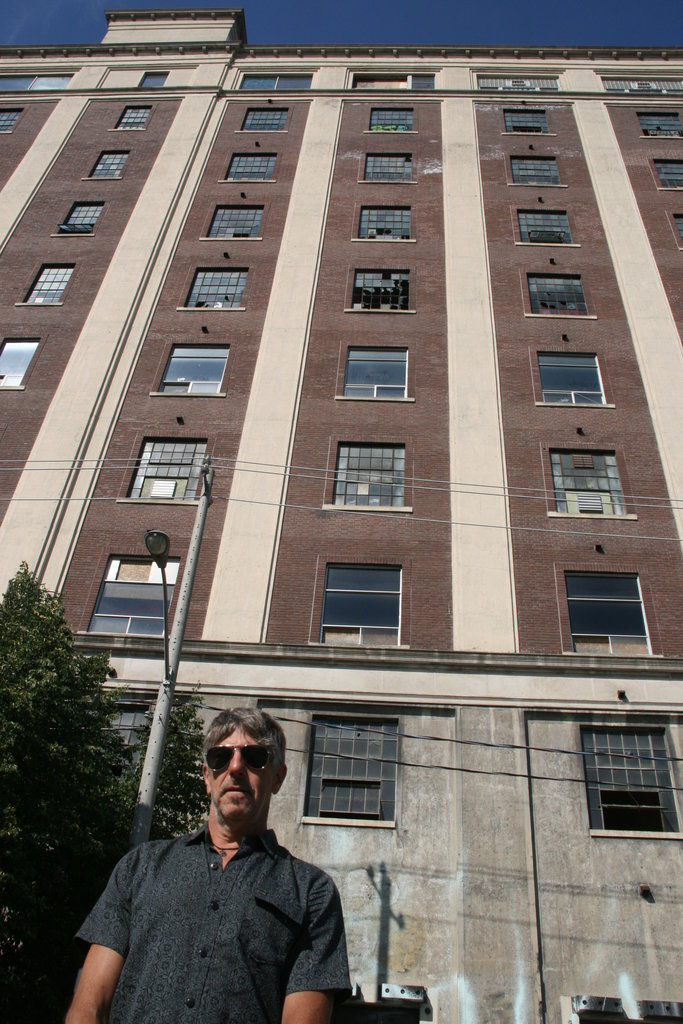 David Liss, Artistic Director and Curator, MOCCA in front of their new location at 158 Sterling Road. Photo: Phil Anderson
David Liss, Artistic Director and Curator, MOCCA in front of their new location at 158 Sterling Road. Photo: Phil Anderson
P.A: MOCCA certainly impacted Queen St. West and the art scene there. With many galleries creating a new home in the Bloordale area how do you feel MOCCA will contribute to this change? There are galleries moving to Dupont and Dufferin as well.
D.L: I think we’ve learned quite a bit about ourselves and our role, and the role of art museums in general, within the cultural ‘ecology’ of Toronto from our time on Queen West. Part of this has been circumstantial: most art museums are born out of either private philanthropy or government initiative. Despite crucial sustaining support, encouragement and guidance from the City, MOCCA began its life as neither. In other words, we did not start as a fully formed organization with a full staff compliment and a state-of-the-art facility built to match a vision. MOCCA has evolved more as a ‘grass roots’ organization, meaning it has become what it has become through the participation and enthusiasm of artists and audiences – the community – and sheer hard work and dedication of staff and Board, enthusiastic partnerships with other organizations, as well as a passionate Membership base. As we’ll be more than doubling the size of our facility – and our budget on Sterling – I think that re-locating to the Bloordale/Junction area during a time of a seismic geographical shift in the Toronto art world means that we’ll be evolving alongside the art scene, similar to when we moved to Queen St. from North York. I think MOCCA has an opportunity to be a real anchor for the art community. Seems really exciting to me!
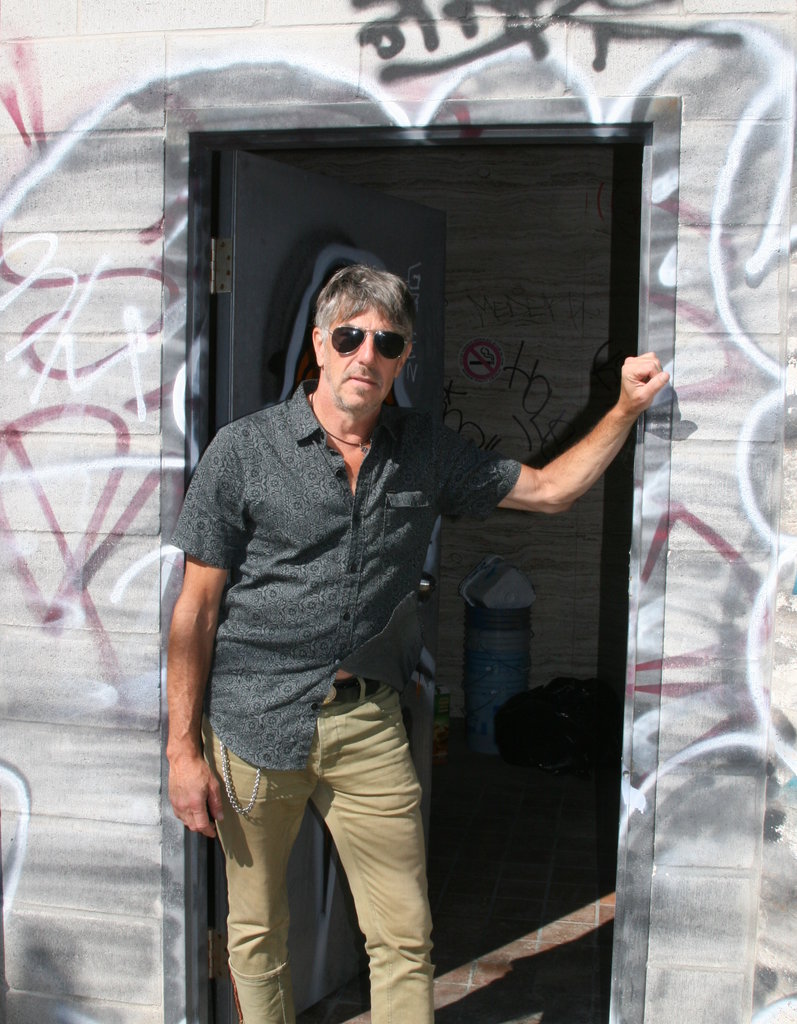 David Liss, Artistic Director and Curator, MOCCA at the side entrance of their new location. Photo: Phil Anderson
David Liss, Artistic Director and Curator, MOCCA at the side entrance of their new location. Photo: Phil Anderson
P.A: Having a 20 year lease with an option for another 20 years in the new space in the old Tower Automotive Building must also give MOCCA a solid future home. MOCCA is now an independent charity separate from the City of Toronto with a Board of Directors instead of advisors (since August 2012). How has this allowed MOCCA to change in the way it operates?
D.L: The City, and in particular the Culture Division, have been hugely supportive of MOCCA from the start and we wouldn’t have survived at all or be where we are today without their support. But even when I started at MOCCA, it was made clear to me that the plan was to become an independent organization. The City committed to supporting MOCCA to the point that they, and MOCCA felt that it was time to “leave the nest”. And the City will continue to be supportive. Canada’s largest “world class” city finally has a permanent contemporary art museum as most, if not all great cities in the civilized world have. What’s not to be supportive of? But one thing we’ll have to consider is that the City won’t necessarily be there as a safety net. So we won’t be able to borrow Dad’s car and credit cards. We’ve moved out of the house. And that’s as scary as it is exhilarating. But we’re ready for that.
P.A: How do you see the programming changing in the new space? There is obviously more space to exhibit with 5400 square metres.
D.L: I’d like to think – and many have told me over the years – that MOCCA has a very distinct identity and spirit and hopefully we can hold on to that. I believe that identity and spirit are largely derived from the artistic programming and the engagement of audiences. It’s my hope that we can evolve to the next level as an institution and still retain the spirit and identity that have defined us thus far. On a more ‘pragmatic’ level, the scale and nature of the new facility should allow us to better serve artists and audiences – to do things on Sterling that we couldn’t do given limitations around the scale and physical plant of the building on Queen. Educational programming for one thing, and more opportunities for social engagement around the programs. But one hugely important practical difference is that we’ll be able to have the new MOCCA be open year round. Because of our 2 gallery spaces on Queen being on one floor, we always had to close to the public for 2 or 3 weeks at a time to change exhibitions. In fact, MOCCA on Queen was closed for about a ¼ of the year.
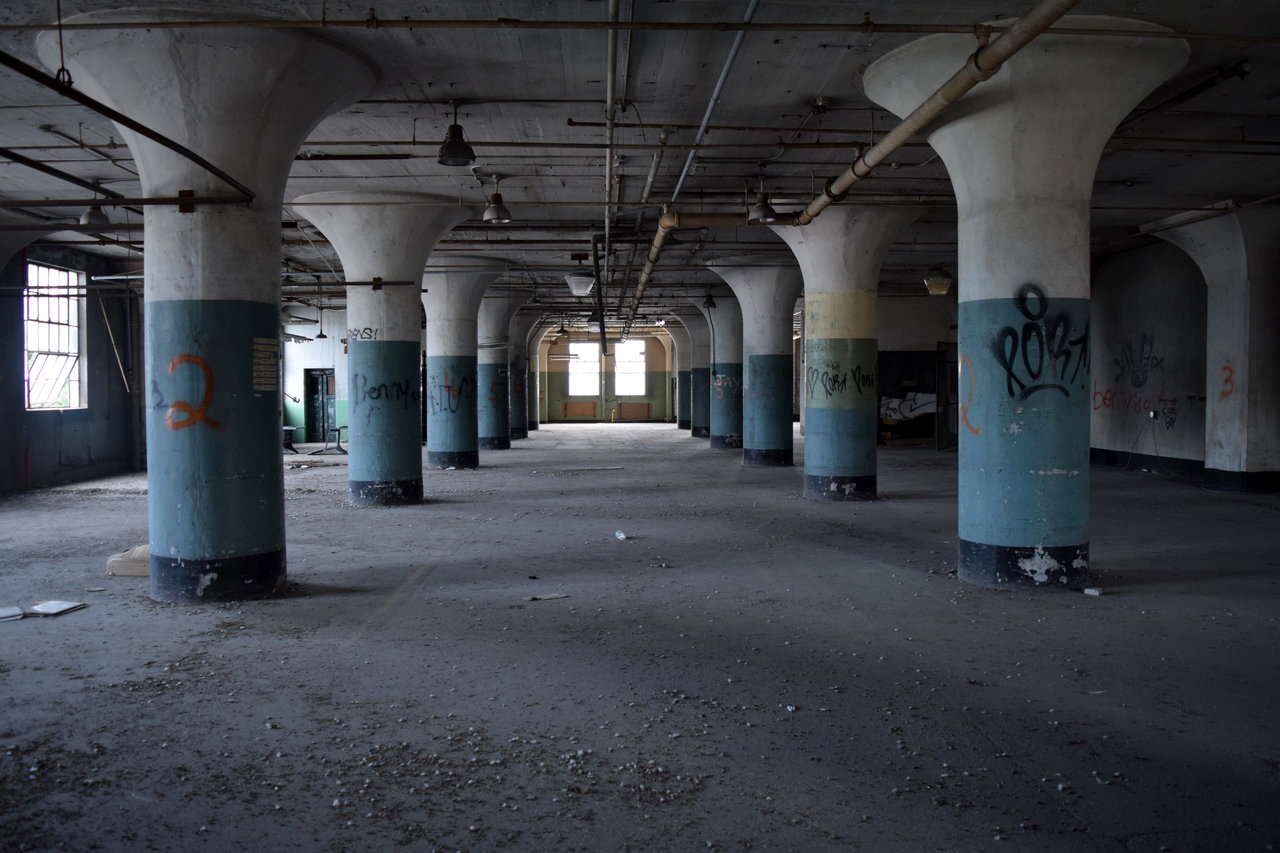 Interior of MOCCA’s new place at 158 Sterling Road. Courtesy of the Museum of Contemporary Canadian Art
Interior of MOCCA’s new place at 158 Sterling Road. Courtesy of the Museum of Contemporary Canadian Art
P.A: Do you see MOCCA increasing its art collection in the future when it is settled in its new home? I believe there are about 400 works in the current collection and I believe you have said you wanted MOCCA to increase its collection.
D.L: We are a museum and thus there is the expectation that we’d feature our collection prominently and build upon our collecting activities. We did inherit the collection from the Art Gallery of North York, and have only added a few new pieces since our inception as MOCCA, and because we’ve been building the organization from scratch, we didn’t have an opportunity to this point to activate the collection in ways we would have liked to. But yes, we are excited to expand our collection. With our new larger and more dynamic space there will be more opportunity to collect and exhibit works from our permanent collection.
P.A: There is a lot of fundraising to be done before you move in late 2016 or 2017. Is there any government support and are you confident that the private sector will contribute?
D.L: Yes indeed, there is fundraising to be done. We have been sowing some seeds the past couple of years in preparation for securing a facility but it’s a little premature for me to say who will commit but we’ve been having ‘conversations’ that’ll get a little more ‘real’ in the very near future. Maybe I’m a little biased here but it seems to me that government agencies and philanthropically-minded citizens from the private sector will see a contemporary art museum in Toronto as a very exciting and important opportunity; culturally, socially, educationally and economically.
P.A: What kinds of programming will be done in the interim before MOCCA moves into its new space?
D.L: While our big focus necessarily will be on the new facility and accompanying programs – opening less than 2 years from now – we’re still committed to doing what we do: engaging people in art. I don’t want to spoil any surprises here but we will be announcing some programs for the Fall shortly and we have our curator Su-Ying Lee developing programs for 2016. We definitely won’t be going totally dark. Even without a white cube there’s still fun to be had.
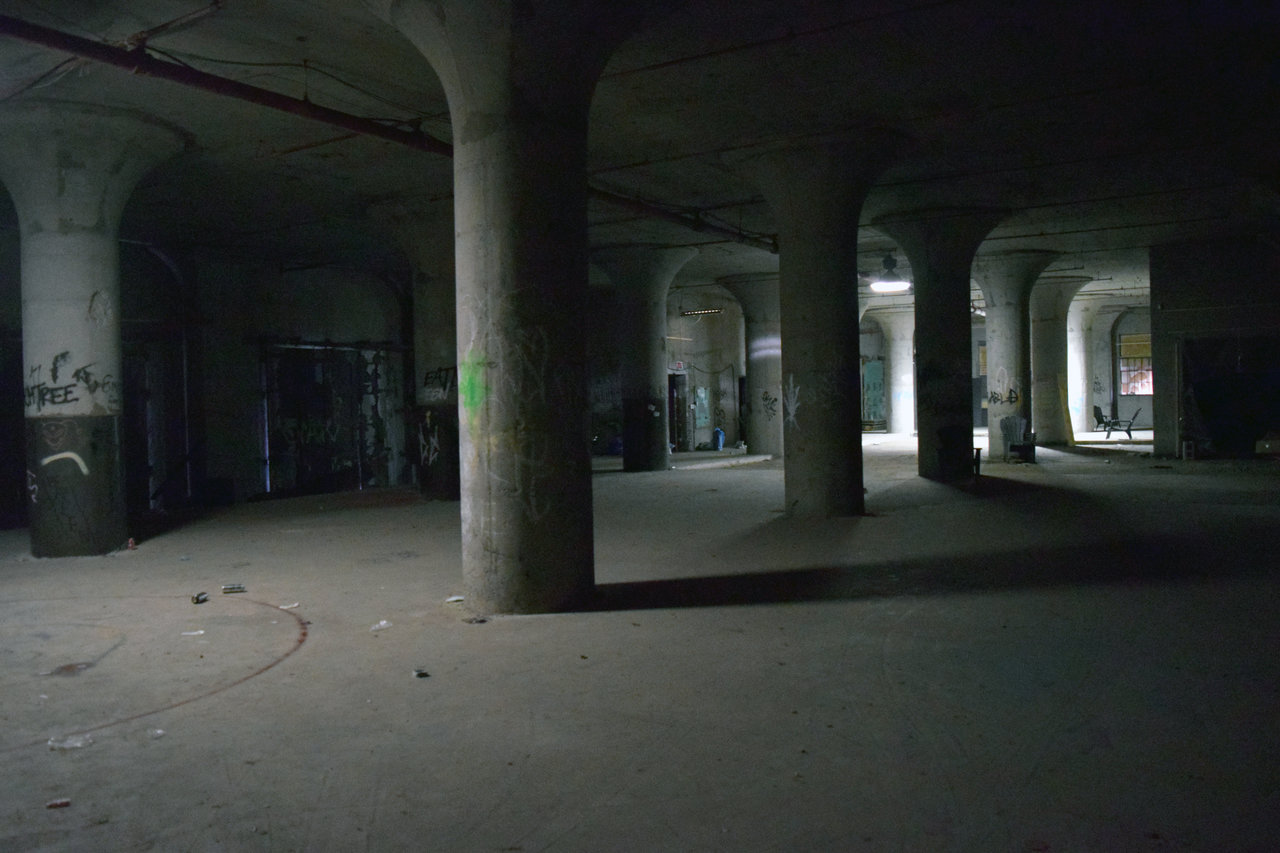 Interior of MOCCA’s new place at 158 Sterling Road. Courtesy of the Museum of Contemporary Canadian Art
Interior of MOCCA’s new place at 158 Sterling Road. Courtesy of the Museum of Contemporary Canadian Art
P.A: Toronto is a developing city and changing at a fast pace. If the condo development hadn’t presented itself at the Queen and Shaw space do you think MOCCA would be moving anyway to expand its presence?
D.L: We knew all along going into Queen St. that we had a 10-year lease and so from the start it was our intention to build the organization, establish viability and an identity, try some things out and have as much fun as possible, so the sale of the building and our imminent departure come as no surprise. As great as the geographic location of Queen and Shaw is, that piece of property would be difficult for us to develop in ways that serve our vision. No regrets!
P.A: Castlepoint, the developer, had a number of different plans for the Tower property and it almost became a condo project. That changed thanks to the Nestle factory’ s objections. How do view this irony?
D.L: Well, it works for MOCCA so I guess I can only be amused by the irony. Ha, ha! But I’m also aware of the realities of the global shift to urbanization, in Toronto, Canada and elsewhere, and the positives and negatives that result. What makes Toronto the great city that it is, is people – residents and visitors – so I can’t view the fact of people wanting to live here as a bad thing, and if people want to live here they need housing. I just wish the new architecture was a little more interesting; had a bit more distinctive character.
P.A: What other development is happening in the building and will it compliment MOCCA’s presence?
D.L: At this point I’m not sure who, if anyone has signed on. As Tower Automotive is a heritage building I know that the developer is very focussed on restoring it and getting MOCCA in there as the ‘signature’ tenant. The building is on a 7-acre site and the developer has some really exciting plans for the property over the next 10 years. We’ve had some discussion with them about the larger vision and it’s my understanding that they want to attract ‘creative industries’. As a public and open-minded institution we hope to attract a diverse range of people to the area and to our venue so really, any kind of business operation will benefit MOCCA. All I do know at this point is that it won’t be condos and it won’t be a ‘big box’ mall.
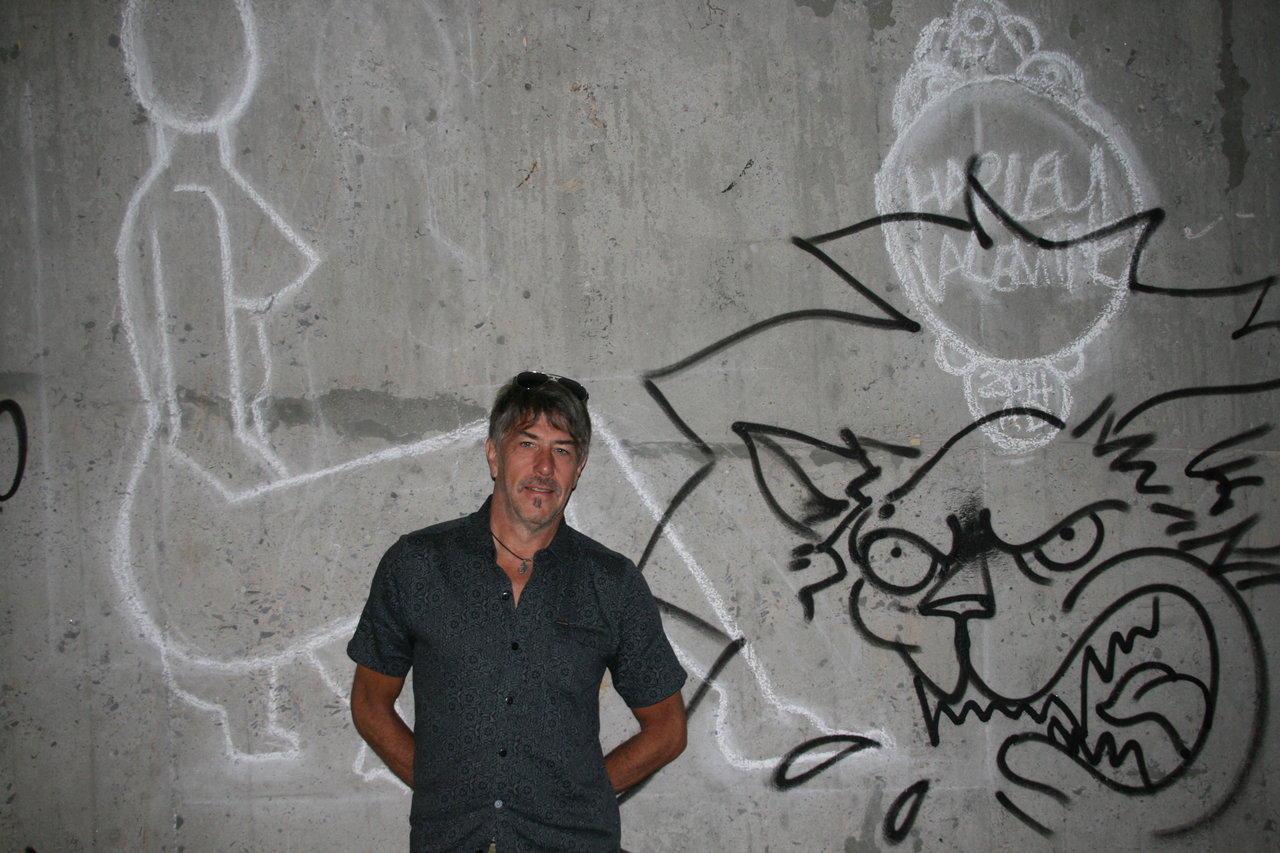 David Liss, Artistic Director and Curator, MOCCA in their new location. Photo: Phil Anderson
David Liss, Artistic Director and Curator, MOCCA in their new location. Photo: Phil Anderson
P.A: You have seen a lot of changes since moving from the North York Gallery location and before then coming from Montreal. How do you feel about the way things have happened and MOCCA’s role in the city’s cultural community?
D.L: Phil, how much space do you have available for me to answer that question? Ha, ha! I’ll try and keep it brief and to the point.
I moved to Toronto because I saw an opportunity to bring a contemporary art museum to Canada’s largest city. I’ll admit that it’s been a little more difficult and complex than I anticipated. Toronto and the Toronto art world is a very competitive environment. There are so many great cultural institutions and venues in this city all competing for attention, support and audience. It’s what makes Toronto a culturally rich place. But it also makes it difficult to start an institution, literally from scratch. On the other hand, in a relatively short period of time I think MOCCA has developed an important role within that ecology so I do have to say that I’m pleased by how things have evolved. As an art fan that travels to other cities around the country and the world, I’m good with ‘the more the merrier’. The reason I, and thousands of people visit places like New York and London is because those cities have so much to offer culturally and artistically. I think MOCCA has found a viable place in the art community here through distinctive character, spirit, participation and contribution. And now Toronto has a contemporary art museum – with a brief but interesting history and a very exciting and optimistic future. Toronto deserves this. So I feel pretty good about the way things have evolved – with MOCCA and the cultural landscape of the G.T.A. We have an amazing art scene here.
